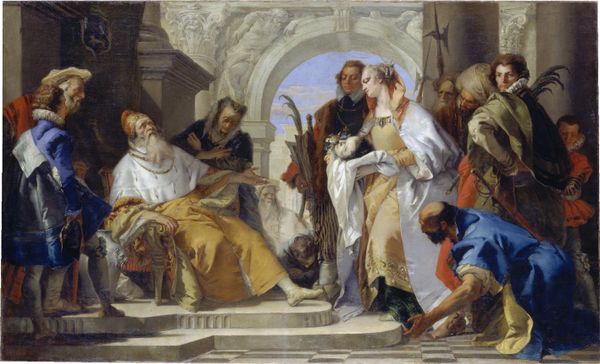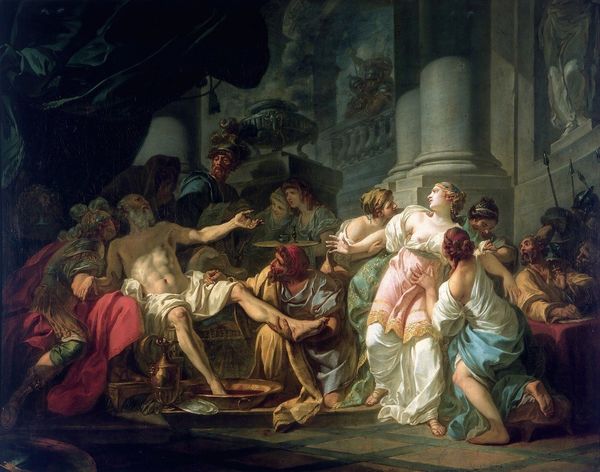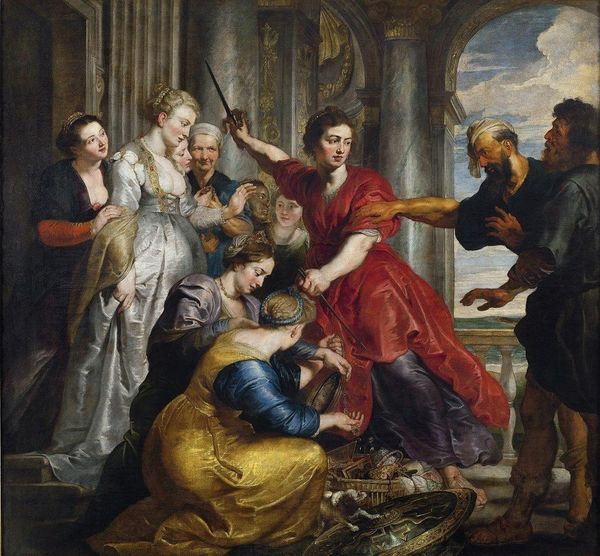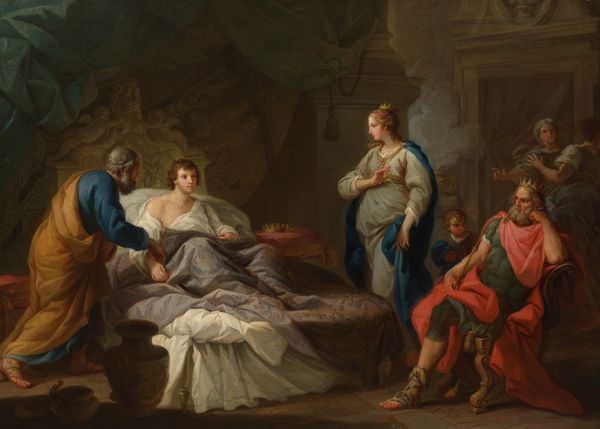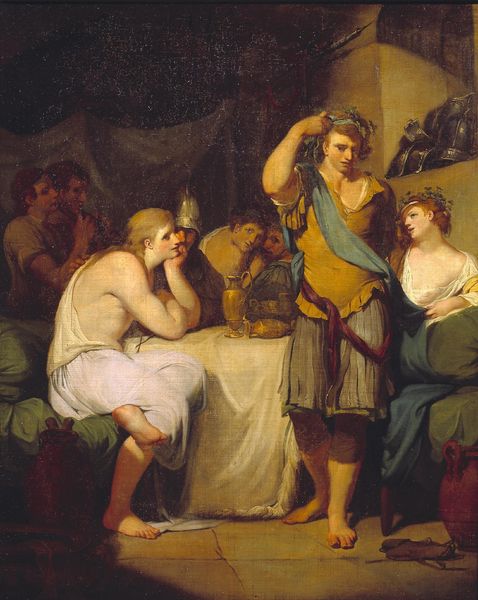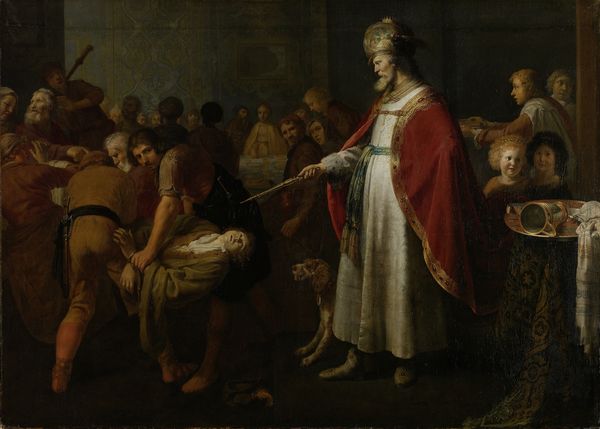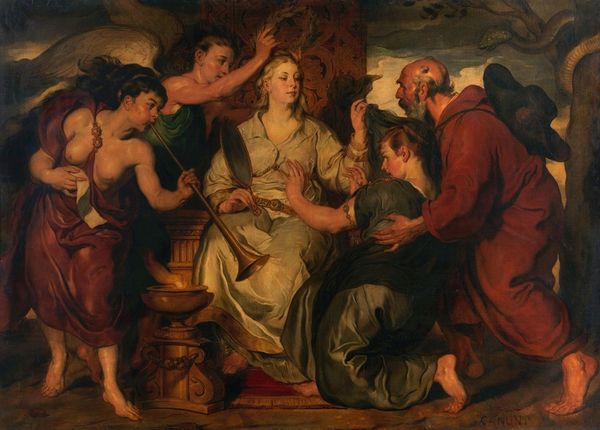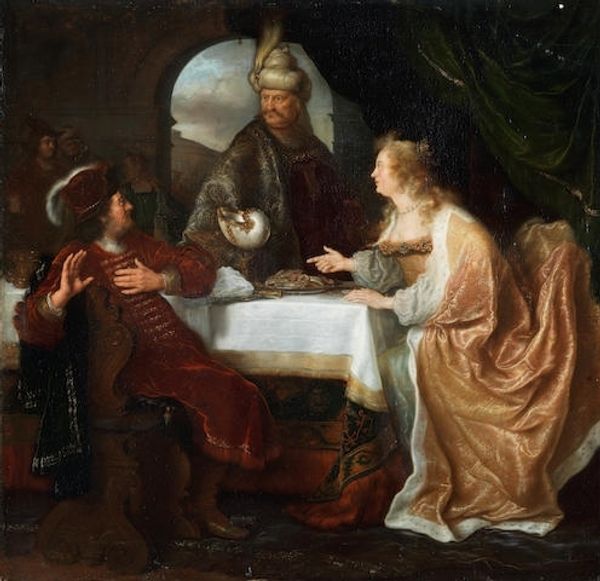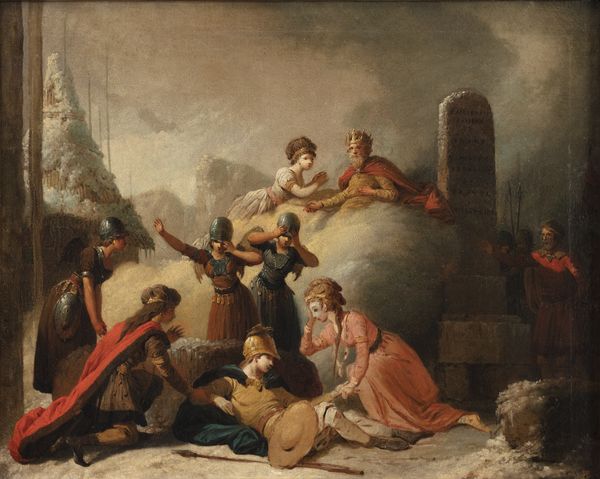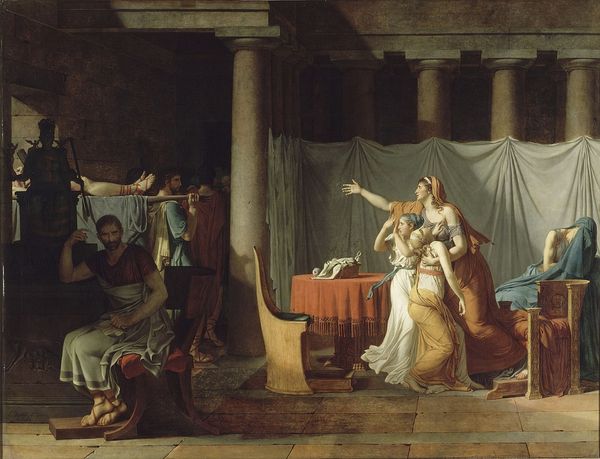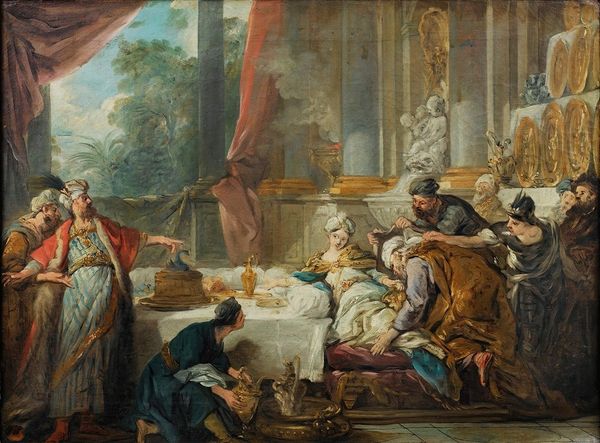
oil-paint
#
portrait
#
narrative-art
#
oil-paint
#
figuration
#
oil painting
#
neo expressionist
#
romanticism
#
mythology
#
history-painting
#
academic-art
Copyright: Public domain
Curator: William Hamilton’s “Vortigern and Rowena,” captures a key moment in British mythology. Editor: It’s… theatrical, almost staged. Like a historical drama unfolding before us. The lighting emphasizes the key players: the fair maiden and the crowned king. I wonder about that intense contrast, light against dark… it feels symbolic, somehow, maybe a foreshadowing of conflict? Curator: Indeed. The contrast amplifies the drama of the narrative. The scene depicts Rowena, offering Vortigern wine, a gesture that, according to legend, led to Vortigern's infatuation and ultimately, his downfall. It’s fascinating how Hamilton uses the oil paint medium to create texture and depth within such a classically-informed composition. Editor: The colour palette feels very deliberate, doesn’t it? The almost stark white of Rowena’s gown contrasts sharply with the dark hues surrounding her. Is the artist trying to portray her as an innocent figure amidst a den of wolves? Or perhaps, there’s a more nuanced reading to be found in that visual tension. And what of the characters arranged in the background? Curator: Those figures in the background seem to operate as an observational chorus to the drama; their faces, half-lit, add a sense of intrigue, inviting viewers to question their roles within the narrative. Furthermore, their architectural setting—arches, columns—underscores the scene’s formality. A compositional stage that serves a greater symbolic order, no? Editor: Yes, everything appears meticulously planned and posed, reinforcing a calculated narrative. And yet, despite that obvious structuring, the painting evokes a raw kind of emotive response; It suggests a tale of lust and betrayal – or maybe I am just overthinking the thing! Curator: Not at all. Hamilton uses those visual structures to communicate something of lasting, perhaps perennial significance. I see a kind of meditation on the timeless power of seduction, and the perils inherent to absolute rule. Editor: I guess, stepping back, there is more to this scene than the aesthetic qualities that strike you at first; it feels like a window into a much broader set of social, cultural anxieties surrounding power. Curator: Precisely!
Comments
No comments
Be the first to comment and join the conversation on the ultimate creative platform.
